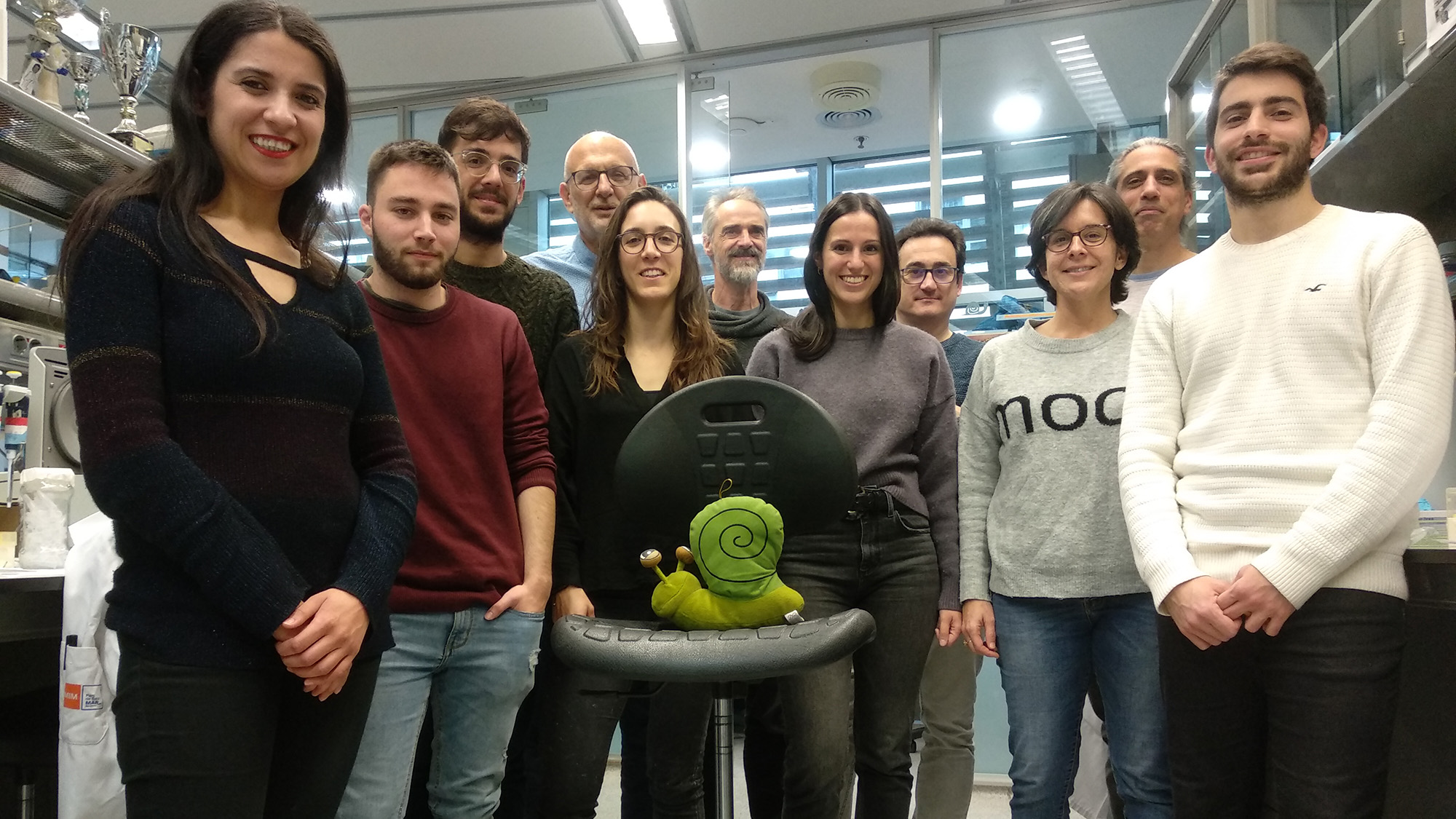Twenty eight years ago, Antonio Garcia de Herreros came from the United States — where he did his postdoc — and established himself at the Hospital del Mar Medical Research Institute (IMIM), where he still heads the Research Group on Mechanisms of Tumorigenesis and Tumor Progression. “I am one of the most senior researchers at the centre… And I have been studying the same topic for almost 20 years: tumor invasion and dedifferentiation of epithelial cells towards fibroblasts“, explains the chemist.
Epithelial-mesenchymal transition
Indeed, 20 years ago Antonio was part of the group that demonstrated that the transcription factor Snail was involved in the dedifferentiation of epithelial cells to fibroblasts that takes place during tumor development.
20 years ago, Antonio was part of the group that demonstrated that the transcription factor Snail was involved in the dedifferentiation of epithelial cells to fibroblasts that takes place during tumor development.
This dedifferentiation process, called epithelial-mesenchymal transition (EMT), was already known – it takes place, for example, during embryonic development, specifically in gastrulation. Christiane Nüsslein-Volhard, a researcher who won the Nobel Prize for her discoveries about genetic control of embryonic development, had shown that Snail was involved. “Around 1997, Eduard Batlle, a PhD student in my laboratory at that time and currently a program leader at IRB, thought about analyzing whether factors involved in gastrulation such as Snail could also be involved in tumor invasion“, recalls Garcia de Herreros. “It was an excellent idea and I told him to go ahead”.
And indeed, Snail turned out to be involved. It turns out that for tumor cells to be invasive, that is, to migrate from the initial tumor and metastasize, they need to reduce their levels of E-cadherin, a membrane protein that allows cells to bind to each other. The researchers saw that Snail was responsible for inhibiting the expression of E-cadherin, making cells more invasive. “They also become more resistant to tumor treatments; they reprogram their metabolism and acquire tumor stem cell characteristics”, confirms the scientist.
For tumor cells to be invasive, they need to lower their levels of E-cadherin, a membrane protein that allows cells to bind to each other. Snail does it.
Snail’s role in cancer
In recent years, the group has been interested in another role of Snail: the activation of “cancer-activated fibroblasts”, cells that are not cancer-causing but envelop the tumor and are highly relevant not only for it to invade better but also for it to become resistant to the immune system’s attack.
In most types of cancer, tumor cells secrete factors (cytokines) that activate the fibroblasts that surround them. The first thing these factors do is to activate Snail in fibroblasts. “Snail is essential for the activation of these cells and, therefore, for the development of the tumor. Without Snail there is no metastasis, or there is but it is very reduced; slower and more sensitive to drugs”, explains Garcia de Herreros.
In order to grow and become invasive, the tumor needs fibroblasts activated in cancer, and these need Snail.
“The problem is that obtaining Snail inhibitors is difficult, since it is a transcription factor: it has no enzymatic activity, but a more structural role, to recruit other proteins, and there is no known inhibitor that works properly”, laments the group leader. This is why investigators are looking for alternative ways to attack Snail.
Looking for deubiquitinase inhibitors
Snail is very unstable and has a very short mean life. When its expression is activated, what actually happens is that the protein stabilizes. “If we want more Snail activity, what we need to do is to stabilize it so that it does not degrade, while if we want less activity, we must prevent its stabilization,” says Garcia de Herreros. What the cell does to activate Snail is to increase deubiquitinases (DUBs), a type of enzymes that help stabilize the protein. What scientists want to achieve is the opposite: reduce deubiquitinases so that they do not stabilize Snail and it has less activity and does not help the tumor to metastasize.
Deubiquitinases are proteases, a type of enzyme, so they should be easier to inhibit than Snail, but there are still no proper deubiquitinase inhibitors that act on Snail. A year ago, the IMIM laboratory began to do screenings in order to try to find them.
Modulating the immune system
Another key research area in the laboratory is the relationship between Snail expression and the ability of active fibroblasts to modulate the immune system. “These activated fibroblasts in cancer are capable of preventing M1 macrophages from attacking the tumor, and may even recruit other cells of the immune system (M2 macrophages) that secrete factors that increase the capacity for metastasis,” explains Garcia de Herreros.
“Our goal is to design new inhibitors of tumor evolution that can be added or combined with existing ones to try to make cancer a chronic disease”, concludes the group leader.







